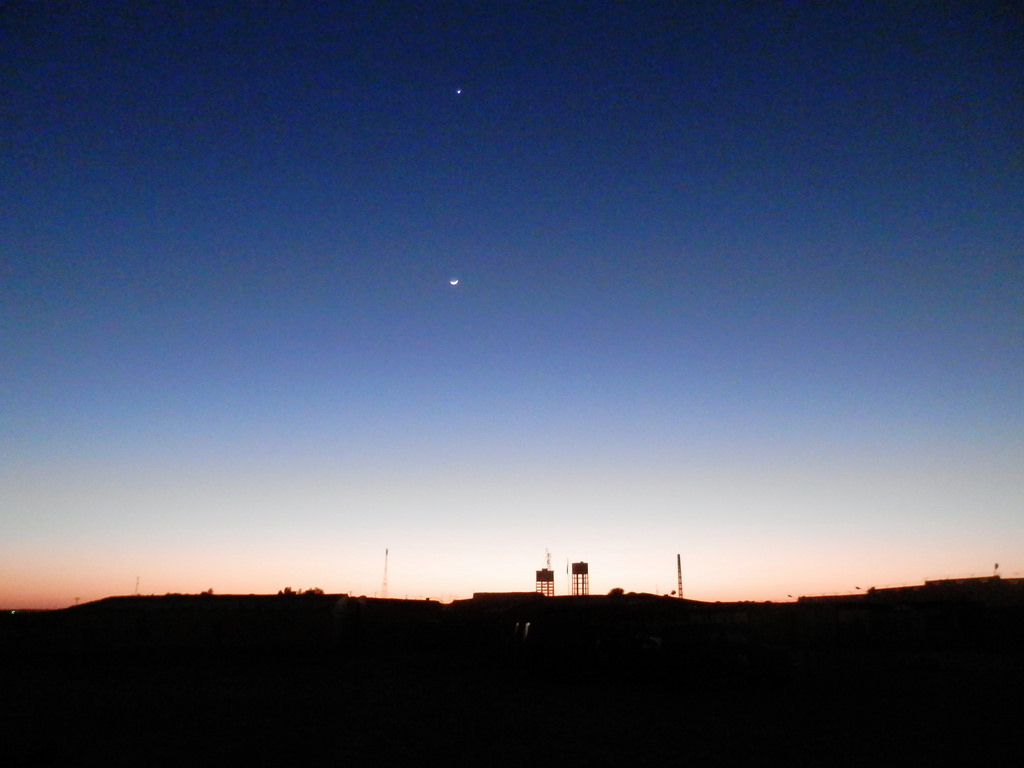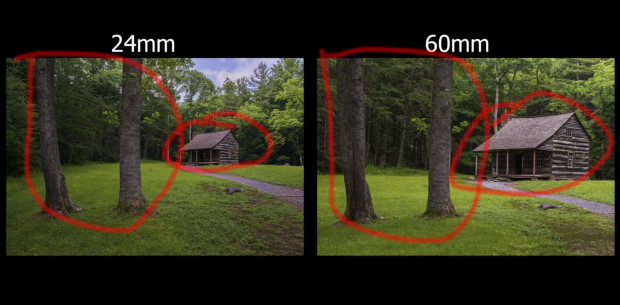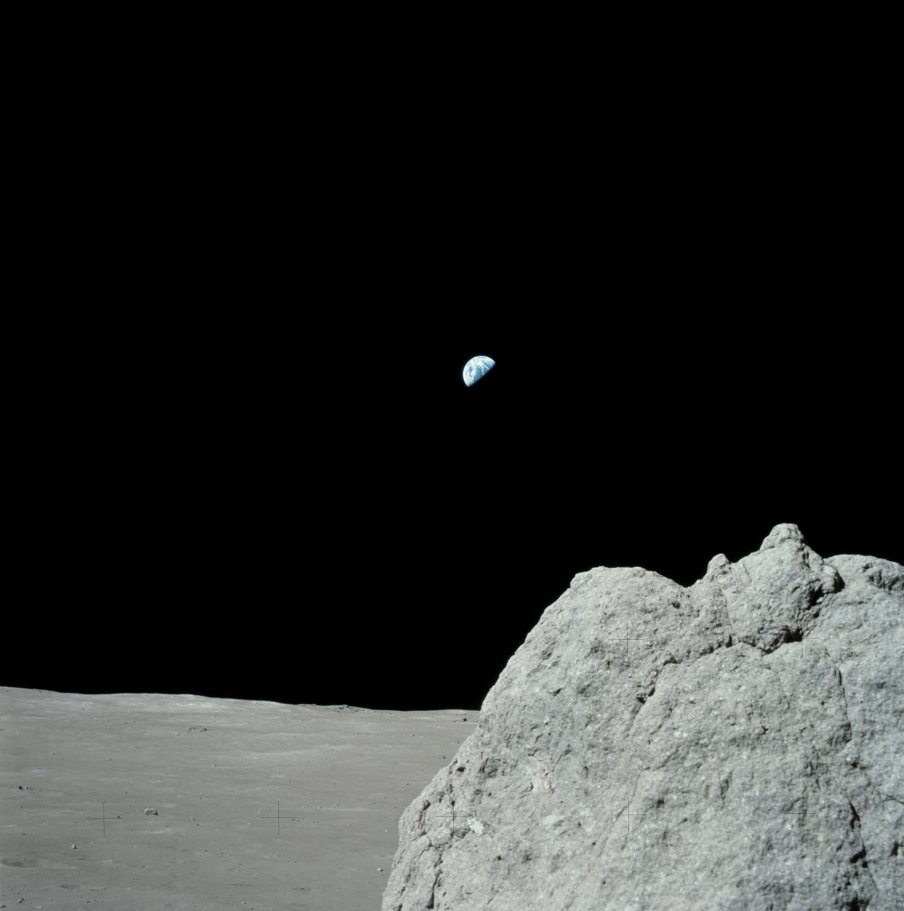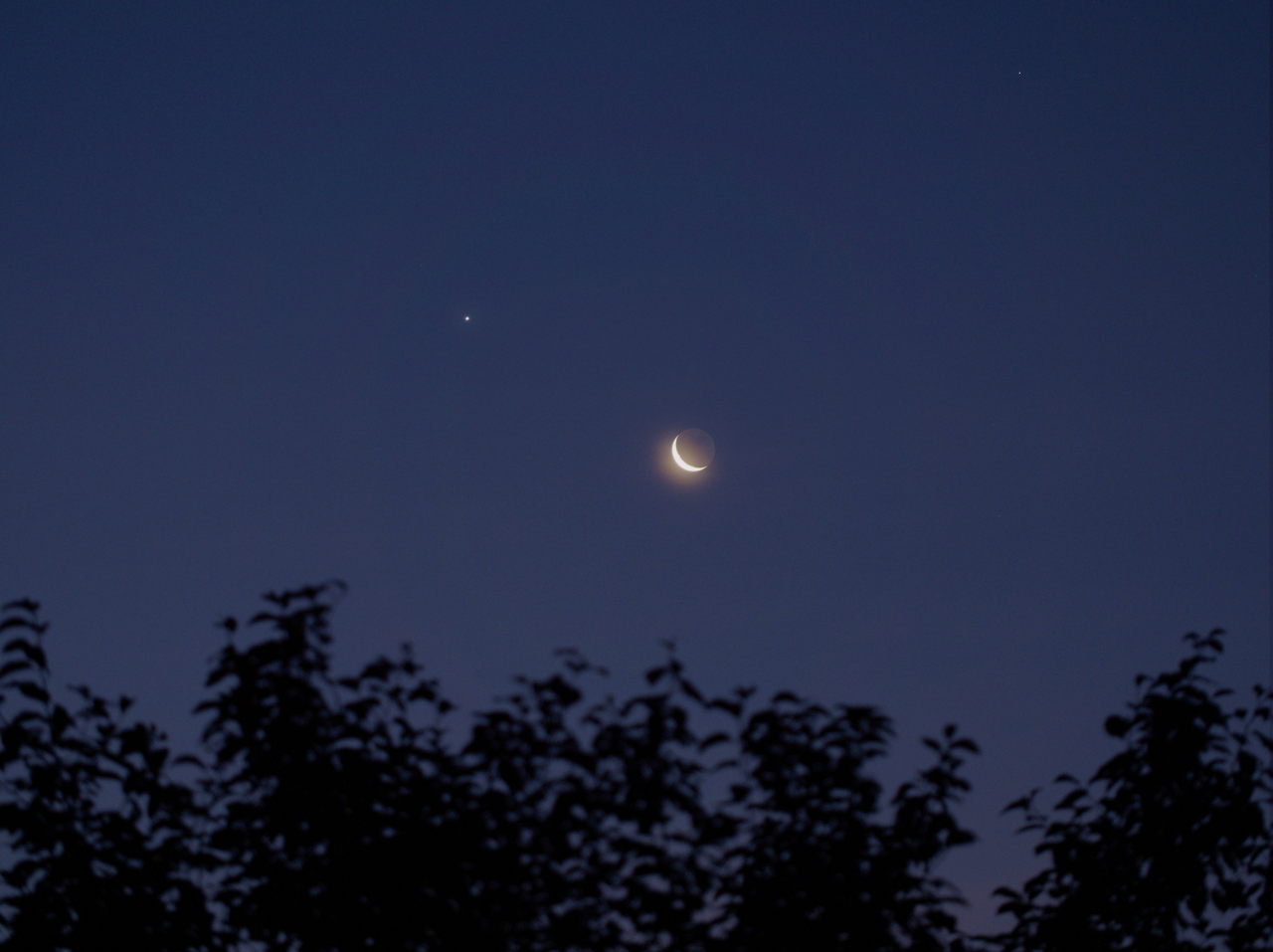It looks like you're using an Ad Blocker.
Please white-list or disable AboveTopSecret.com in your ad-blocking tool.
Thank you.
Some features of ATS will be disabled while you continue to use an ad-blocker.
share:
a reply to: Ove38
That was a 60mm lens on a medium format Hasselblad camera.The above example was almost certainly taken with a modern digital camera with an image sensor that's a lot smaller than the film used in medium format cameras.The foreshortening effect of a zoom lens will be exaggerated at a shorter focal length because of the smaller size of the sensor.We have a crop factor to consider that renders just focal lengths as above meaningless without knowing the film or sensor size used when taking the photos.
Also consider relative distances before trying to use random images to prove something that's unprovable.The earth is 250,000 miles away from the camera in the first photo,the shed in the example photo is about 50 meters away,so nowhere near to proving anything.
Actually it does prove one thing,that people are so desperate to prove something,they just make stuff up without doing any actual research to find out if it's true or not.
That was a 60mm lens on a medium format Hasselblad camera.The above example was almost certainly taken with a modern digital camera with an image sensor that's a lot smaller than the film used in medium format cameras.The foreshortening effect of a zoom lens will be exaggerated at a shorter focal length because of the smaller size of the sensor.We have a crop factor to consider that renders just focal lengths as above meaningless without knowing the film or sensor size used when taking the photos.
Also consider relative distances before trying to use random images to prove something that's unprovable.The earth is 250,000 miles away from the camera in the first photo,the shed in the example photo is about 50 meters away,so nowhere near to proving anything.
Actually it does prove one thing,that people are so desperate to prove something,they just make stuff up without doing any actual research to find out if it's true or not.
a reply to: Imagewerx
And to add to that, we should also consider that when a picture of the Moon is taken with a normal camera -- say 24 mm lens, like Ove38 showed --- the Moon ends up looking surprisingly smaller than one might expect. That is, it looks smaller in the image than it looked in real life, like this image:

Full-sized Image
(I edited my previous post to include this point.)
And to add to that, we should also consider that when a picture of the Moon is taken with a normal camera -- say 24 mm lens, like Ove38 showed --- the Moon ends up looking surprisingly smaller than one might expect. That is, it looks smaller in the image than it looked in real life, like this image:

Full-sized Image
(I edited my previous post to include this point.)
edit on 1/12/2018 by Soylent Green Is People because: (no reason given)
a reply to: Soylent Green Is People
You need to quantify 'normal' a bit more accurately for modern digital cameras though.A 24mm lens on a full frame (or 35mm film) camera is true wide angle compared to it's 1:1 view with a 50mm lens (considered lifesize or the same view as the human eye).On an APS-C camera (the most popular DSLR type for a LONG time) this would be equivalent to 38mm (a crop factor of 1.6),and on the newer micro 4/3 system it would be equivalent to 48mm with it's 2X crop factor.
You need to quantify 'normal' a bit more accurately for modern digital cameras though.A 24mm lens on a full frame (or 35mm film) camera is true wide angle compared to it's 1:1 view with a 50mm lens (considered lifesize or the same view as the human eye).On an APS-C camera (the most popular DSLR type for a LONG time) this would be equivalent to 38mm (a crop factor of 1.6),and on the newer micro 4/3 system it would be equivalent to 48mm with it's 2X crop factor.
a reply to: Imagewerx
Thanks for the info!
I'm only pointing out that in general, and without zooming or telephoto lenses, the Moon in a picture taken from Earth may seem a lot smaller than a person would expect, and smaller than it seemed "in person".
That would also be true for a picture of the Earth taken from the Moon. I bet the Earth seemed larger in the sky to the astronaut taking that picture than it does in the picture.
Thanks for the info!
I'm only pointing out that in general, and without zooming or telephoto lenses, the Moon in a picture taken from Earth may seem a lot smaller than a person would expect, and smaller than it seemed "in person".
That would also be true for a picture of the Earth taken from the Moon. I bet the Earth seemed larger in the sky to the astronaut taking that picture than it does in the picture.
edit on 1/12/2018 by Soylent Green Is People because: (no reason given)
a reply to: Soylent Green Is People
You're welcome!!!
Also we need to allow for the other body's (earth or moon) position relative to the horizon that fools the brain into thinking it's larger when lower down.
The astronaut on the surface of the moon should see the earth roughly 4 times bigger using his (or her) eyes than we see the moon from the earth?
You're welcome!!!
Also we need to allow for the other body's (earth or moon) position relative to the horizon that fools the brain into thinking it's larger when lower down.
The astronaut on the surface of the moon should see the earth roughly 4 times bigger using his (or her) eyes than we see the moon from the earth?
originally posted by: Ove38
The Earth is to small and to low in the sky.
AS17-137-20960
As others explained, the apparent size is just fine for a 60mm lens.
A more important question is - why this and a few other images from that magazine are upside down.
eol.jsc.nasa.gov...
originally posted by: wildespace
A more important question is - why this and a few other images from that magazine are upside down.
eol.jsc.nasa.gov...
Maybe the person who scanned them was drunk?
originally posted by: Soylent Green Is People
Why did you compare the 60 mm focal length the a 24 mm? ......
50mm is the most common standard lens, although some companies do sell lenses which are closer to 43mm focal length. Which means that 60 mm focal length makes the Earth bigger, whereas 24 mm focal length, as you pointed out, makes the Earth smaller.

The Earth in the background is too small, even if the 60 mm focal length lens made it bigger.

edit on 2-12-2018 by Ove38 because: text fix
originally posted by: Ove38
originally posted by: Soylent Green Is People
Why did you compare the 60 mm focal length the a 24 mm? ......
50mm is the most common standard lens, although some companies do sell lenses which are closer to 43mm focal length. Which means that 60 mm focal length makes the Earth bigger, whereas 24 mm focal length, as you pointed out, makes the Earth smaller.
But the Apollo astronauts didn't use 24mm lens. So I'm not sure why you're even bringing this up here.
The Earth in the background is too small, even if the 60 mm focal length lens made it bigger.
What are you basing this statement on? Have you done the calculations? Earth is approximately 2 degrees in angular size as seen from the Moon. You can convert that to the actual size on the photo given the known lens focal length and size of the frame. Keep in mind that the Apollo Hasselblad photos used 70mm film, the frame being twice as large as the standard 35mm film frame.
edit on 2-12-2018 by wildespace because: (no reason
given)
edit on 2-12-2018 by wildespace because: (no reason given)
originally posted by: wildespace
originally posted by: Ove38
originally posted by: Soylent Green Is People
Why did you compare the 60 mm focal length the a 24 mm? ......
50mm is the most common standard lens, although some companies do sell lenses which are closer to 43mm focal length. Which means that 60 mm focal length makes the Earth bigger, whereas 24 mm focal length, as you pointed out, makes the Earth smaller.
But the Apollo astronauts didn't use 24mm lens. So I'm not sure why you're even bringing this up here.
To make him understand that a 60 mm focal length lens makes the Earth bigger whereas a 24 mm focal length lens makes the Earth smaller.
His explanation to why the earth is so small in the picture, was that they used a 60 mm focal length lens, which is a self contradictory statement.
edit on 2-12-2018 by Ove38 because: text fix
originally posted by: Ove38
50mm is the most common standard lens.
I take it your entire photographic knowledge is a result of a quick Google Search? 50mm is the most common standard lens for 35mm film and full frame DSLR because it gives a life size or 1:1 image on the film or sensor.The photos on the moon were taken with a larger medium format camera which has a different focal length standard lens.
Please read my post at the top of this page as I really can't be bothered to type it all out again.
Another evidence. This image of the Earth-Moon system was captured on Sept. 25, 2017 by NavCam 1, Earth and the Moon are shown 249,000 miles (401,200
kilometers) apart, and the spacecraft is 804,000 miles (1,297,000 kilometers) from Earth and 735,000 miles (1,185,000 kilometers) from the Moon.
A person standing on the moon would see a much bigger sphere then a person standing on the earth would see.

A person standing on the moon would see a much bigger sphere then a person standing on the earth would see.

edit on 2-12-2018 by Ove38 because: text fix
originally posted by: toocoolnc
A simple explanation of how NASA contradicted themselves: Air conditioning does not work in the vacuum of space.
A vacuum is a condition of nothingness where there are no molecules. Vacuums exist in degrees. Some scientists tell us that there is no such thing as an absolute vacuum. Space is the closest thing to an absolute vacuum that is known to us. There are so few molecules present in most areas of what we know as "space" that any concept of "hot" or "cold" is impossible to measure. A vacuum is a perfect insulator. That is why a "Thermos" or vacuum bottle is used to store hot or cold liquids in order to maintain the temperature for the longest time possible without re-heating or re-cooling.
Radiation of all types will travel through a vacuum but will not affect the vacuum. Radiant heat from the sun travels through the vacuum of space but does not "warm" space. In fact the radiant heat of the sun has no affect whatsoever until it strikes matter. Molecular movement will increase in direct proportion to the radiant energy which is absorbed by matter. The time it takes to heat matter exposed to direct sunlight in space is determined by its color, its elemental properties, its distance from the sun, and its rate of absorption of radiant heat energy. Space is NOT hot. Space is NOT cold.
Objects which are heated cannot be cooled by space. In order for an object to cool it must first be removed from direct sunlight. Objects which are in the shadow of another object will eventually cool but not because space is "cold". Space is not cold. Hot and cold do not exist in the vacuum of space. Objects cool because the laws of motion dictate that the molecules of the object will slow down due to the resistance resulting from striking other molecules until eventually all motion will stop provided the object is sheltered from the direct and/or indirect radiation of the sun and that there is no other source of heat. Since the vacuum of space is the perfect insulator objects take a very long time to cool even when removed from all sources of heat, radiated or otherwise.
NASA insists the space suits the astronauts supposedly wore on the lunar surface were air conditioned. An air conditioner cannot, and will not work without a heat exchanger. A heat exchanger simply takes heat gathered in a medium such as freon from one place and transfers it to another place. This requires a medium of molecules which can absorb and transfer the heat such as an atmosphere or water. An air conditioner will not and cannot work in a vacuum. A space suit surrounded by a vacuum cannot transfer heat from the inside of the suit to any other place. The vacuum, remember, is a perfect insulator. A man would roast in his suit in such a circumstance.
NASA claims the spacesuits were cooled by a water system which was piped around the body, then through a system of coils sheltered from the sun in the backpack. NASA claims that water was sprayed on the coils causing a coating of ice to form. The ice then supposedly absorbed the tremendous heat collected in the water and evaporated into space. There are two problems with this that cannot be explained away. 1) The amount of water needed to be carried by the astronauts in order to make this work for even a very small length of time in the direct 55 degrees over the boiling point of water (210 degrees F at sea level on Earth) heat of the sun could not have possibly been carried by the astronauts. 2) NASA has since claimed that they found ice in moon craters. NASA claims that ice sheltered from the direct rays of the sun will NOT evaporate destroying their own bogus "air conditioning" explanation. - William Cooper
www.mt.net...
The entire premise of this is faulty. There is no such thing as cold, only hot; and the absence of heat is what we call cool. Therefor, space is indeed cold, provided you're not in a radiation band, or being heated by solar luminosity. Also, air conditioning can absolutely be done in a vacuum, as long as the air being conditioned is pressurized. I.E. Space suits are pressurized. Hot things do not stay hot in space unless they are being bombarded by heat. Yes; heat is in space because of radiation and solar activity, but it doesn't permeate throughout all of empty space.
Temperature travels hot to cold, so heat is attracted to the absence of heat, which is what dissipates heat. This is represented in Thermodynamics.
edit on 2-12-2018 by SRPrime because: (no reason given)
originally posted by: Ove38
Another evidence. This image of the Earth-Moon system was captured on Sept. 25, 2017 by NavCam 1, Earth and the Moon are shown 249,000 miles (401,200 kilometers) apart, and the spacecraft is 804,000 miles (1,297,000 kilometers) from Earth and 735,000 miles (1,185,000 kilometers) from the Moon.
A person standing on the moon would see a much bigger sphere then a person standing on the earth would see.
And it is a bigger sphere in the Apollo 17 image you posted earlier.
The argument that "the Moon should look larger" in the Apollo images compared to images taken of the Moon from Earth depends on a lot of different things. However, the general point is that the Moon taken from Earth can look much smaller that the Earth taken from the Moon.
Here's what the Moon can look like from Earth -- smaller than images of the Earth taken from the Moon:

edit on 2/12/2018 by Soylent Green Is People because: (no reason given)
originally posted by: Soylent Green Is People
Here's what the Moon can look like from Earth -- smaller than images of the Earth taken from the Moon:
Nonsense, the Moon never looks like that
This is a 60mm lens image of the Moon

Which tells me that this is not a 60mm lens image of the Earth

edit on 2-12-2018 by Ove38 because: text fix
originally posted by: Ove38
Nonsense, this is a 60mm lens image of the Moon
Do you know it that was cropped or not?
When I take a picture of the Moon, it always looks tiny, much smaller than it did "in real life".
edit on 2/12/2018 by Soylent Green Is People because: (no reason given)
a reply to: Soylent Green Is People
January 2019 will be a super moon
Super moon are full moon when moon is at perigee (closest to earth) in its elliptical orbit
Super moon appear some 14 % bigger because moon is closer
en.wikipedia.org...
Even rarer will be total lunar eclipse at that time , January 20-21, visible from North America
www.timeanddate.com...
Should be specular
January 2019 will be a super moon
Super moon are full moon when moon is at perigee (closest to earth) in its elliptical orbit
Super moon appear some 14 % bigger because moon is closer
en.wikipedia.org...
Even rarer will be total lunar eclipse at that time , January 20-21, visible from North America
www.timeanddate.com...
Should be specular
edit on 2-12-2018 by firerescue because: (no reason given)
originally posted by: mikell
a reply to: Ove38
Keep in mind that the Apollo Hasselblad photos used 70mm film, the frame being twice as large as the standard 35mm film frame
Actually 4x the size 70mm x 70mm.
I've tried to tell him that several times,but his tin foil hat must have fallen down over his eyes and blinded his view of the real world.
originally posted by: mikell
a reply to: Ove38
Keep in mind that the Apollo Hasselblad photos used 70mm film, the frame being twice as large as the standard 35mm film frame
Actually 4x the size 70mm x 70mm.
This Hasselblad 503CW photo also used 70mm film. It didn't make anything in the picture smaller.

new topics
-
Trump could make a peaceful American Revolution
US Political Madness: 1 hours ago -
Trump Presidential Transition Team will not use GSA or Government entities to come to DC
US Political Madness: 2 hours ago -
Mind Blowing Cave under someones land
Fragile Earth: 2 hours ago -
The Party of Peace - Trump Cabinet Picks Targeted with Death Threats
US Political Madness: 3 hours ago -
V.P. Kamala Harris releases a video and nobody understands why
US Political Madness: 6 hours ago -
D.B. Cooper mystery may be solved
General Conspiracies: 11 hours ago
top topics
-
D.B. Cooper mystery may be solved
General Conspiracies: 11 hours ago, 21 flags -
V.P. Kamala Harris releases a video and nobody understands why
US Political Madness: 6 hours ago, 14 flags -
The Party of Peace - Trump Cabinet Picks Targeted with Death Threats
US Political Madness: 3 hours ago, 9 flags -
Mind Blowing Cave under someones land
Fragile Earth: 2 hours ago, 8 flags -
Trump could make a peaceful American Revolution
US Political Madness: 1 hours ago, 5 flags -
Trump Presidential Transition Team will not use GSA or Government entities to come to DC
US Political Madness: 2 hours ago, 3 flags
active topics
-
Mind Blowing Cave under someones land
Fragile Earth • 11 • : KrustyKrab -
Trump Presidential Transition Team will not use GSA or Government entities to come to DC
US Political Madness • 6 • : xuenchen -
V.P. Kamala Harris releases a video and nobody understands why
US Political Madness • 50 • : underpass61 -
The Party of Peace - Trump Cabinet Picks Targeted with Death Threats
US Political Madness • 7 • : xuenchen -
Trump could make a peaceful American Revolution
US Political Madness • 1 • : NorthOS -
I thought Trump was the existential threat?
World War Three • 103 • : cherokeetroy -
Petition Calling for General Election at 564,016 and rising Fast
Political Issues • 105 • : onestonemonkey -
-@TH3WH17ERABB17- -Q- ---TIME TO SHOW THE WORLD--- -Part- --44--
Dissecting Disinformation • 3388 • : Thoughtful3 -
Ed Dowd some good news
Medical Issues & Conspiracies • 40 • : KrustyKrab -
Well, here we go red lines crossed Biden gives the go ahead to use long range missiles
World War Three • 401 • : Xtrozero
